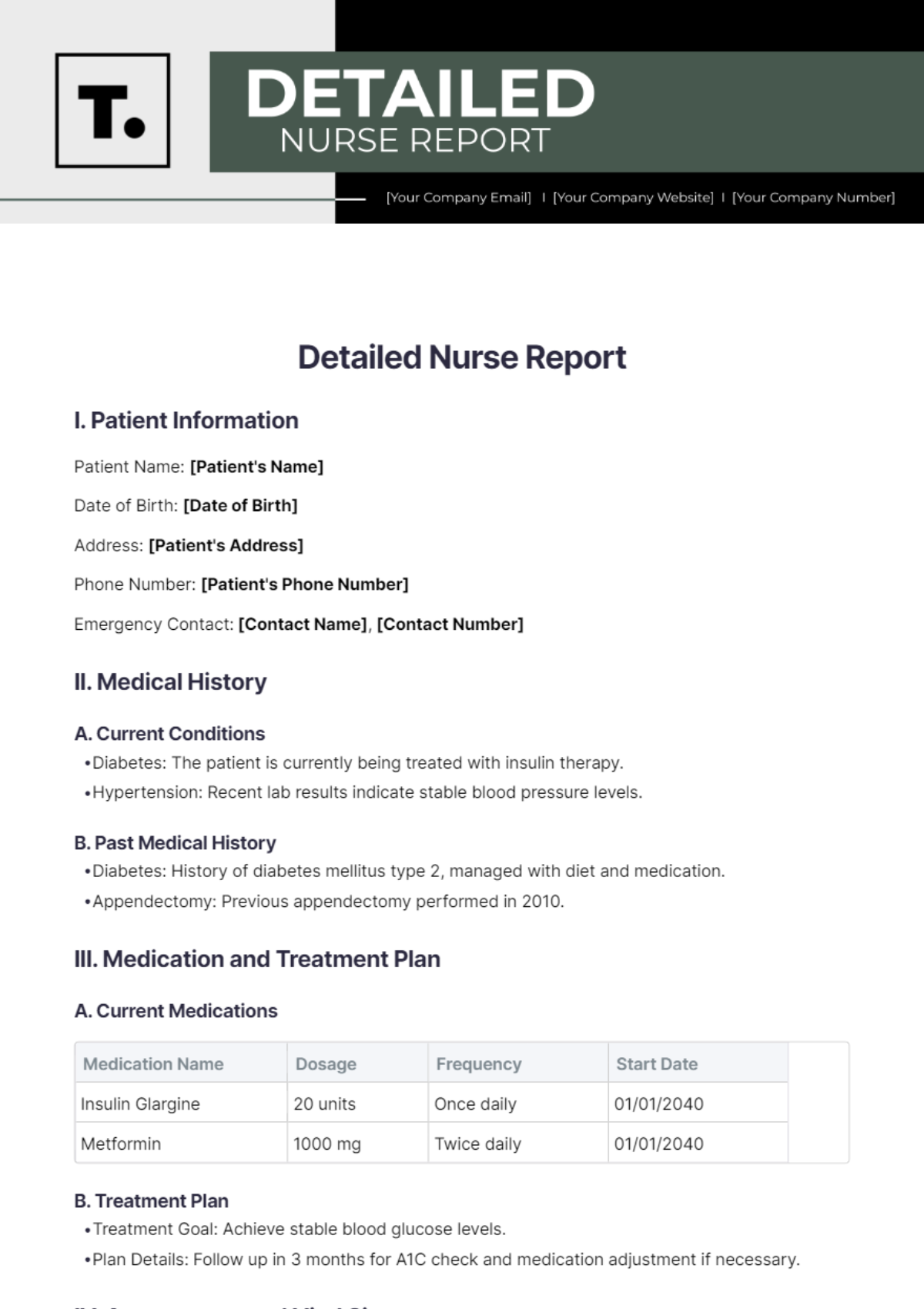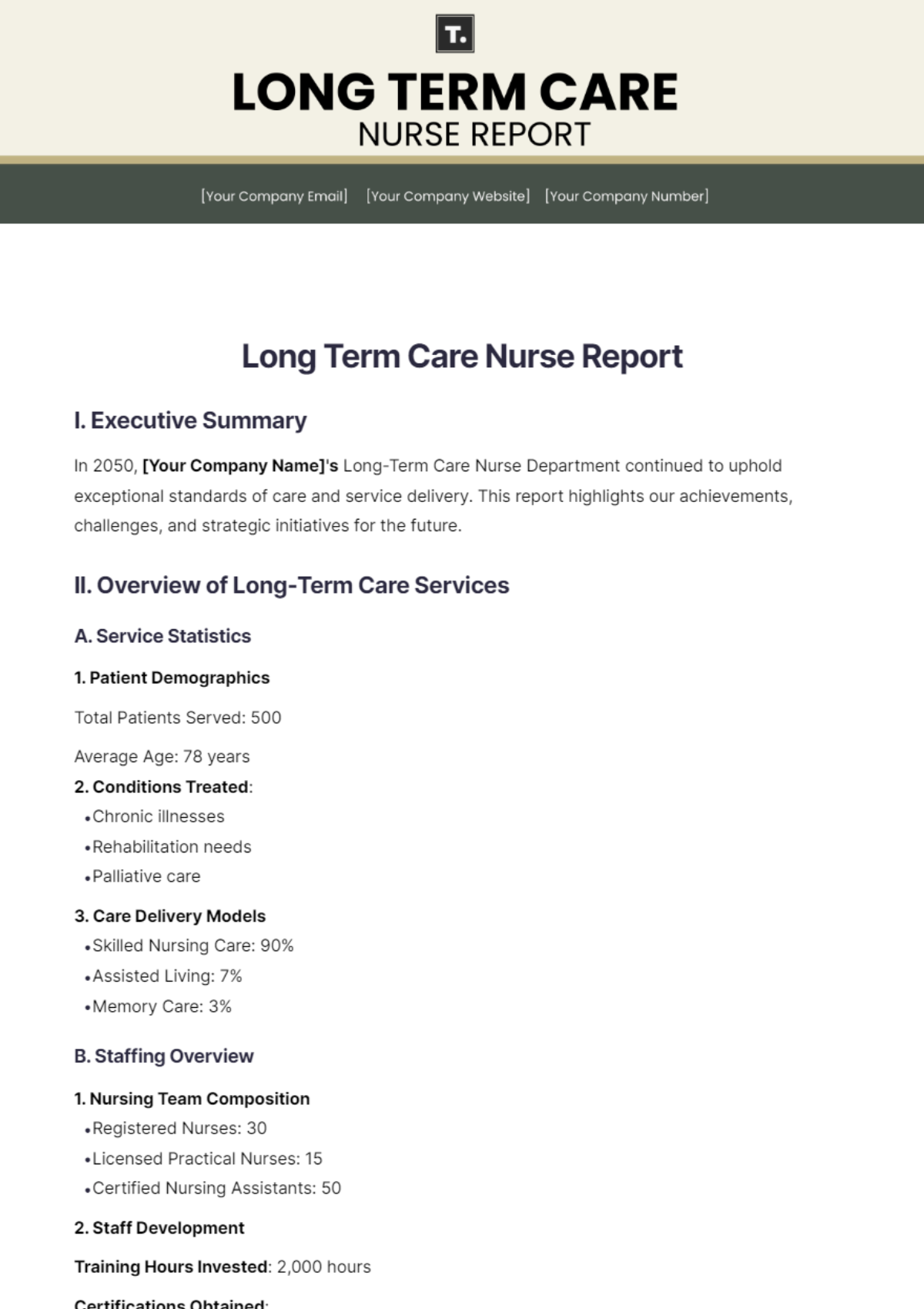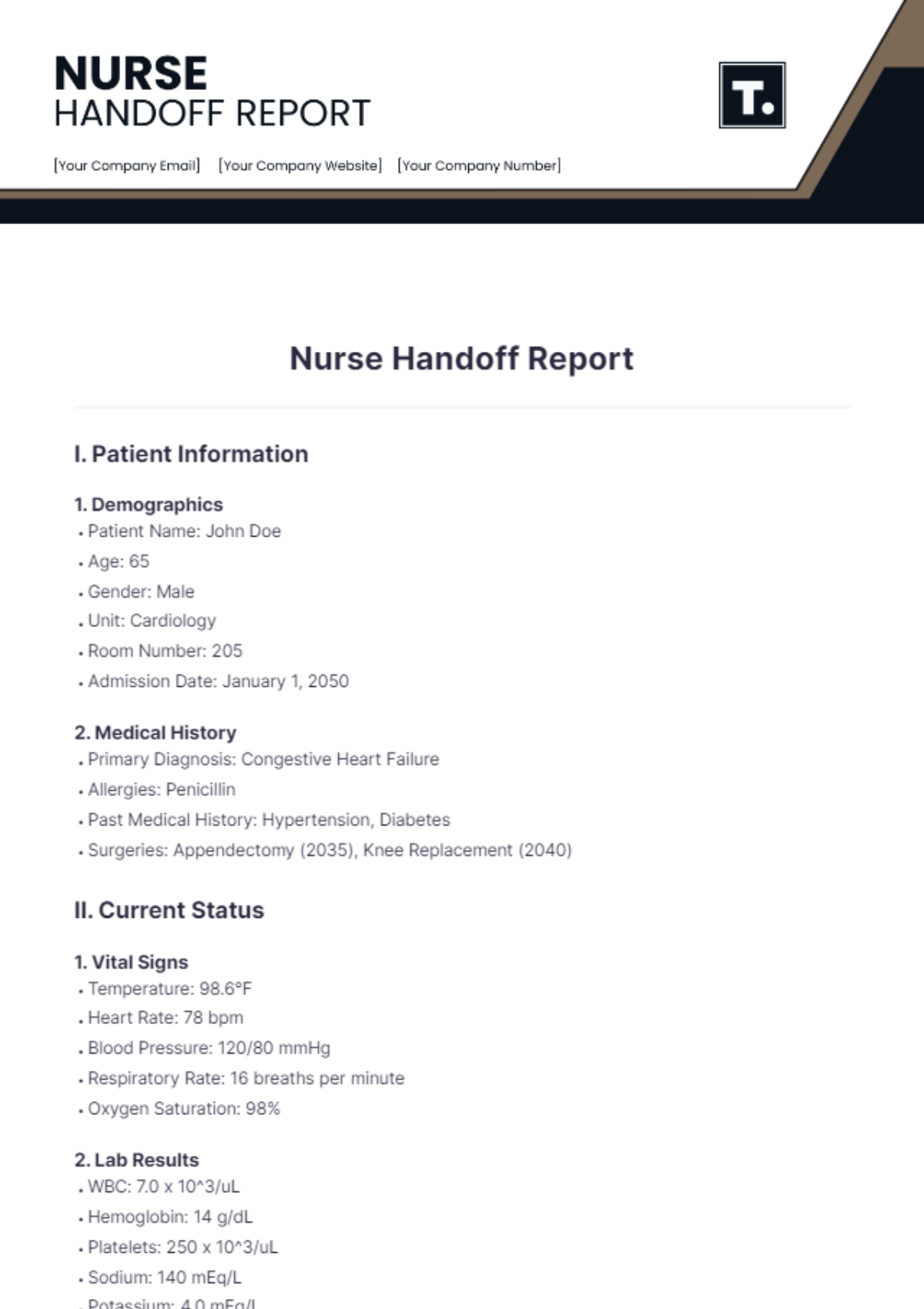Free Nursing Progress Report
Discover and Enhance the Nursing Progress Report Template from Template.net. This fully customizable and editable template is designed to streamline your documentation process. Editable in our AI Editor Tool, it allows you to easily tailor each report to meet specific needs, ensuring precise and professional records every time. Elevate your nursing practice with precision and efficiency.

























